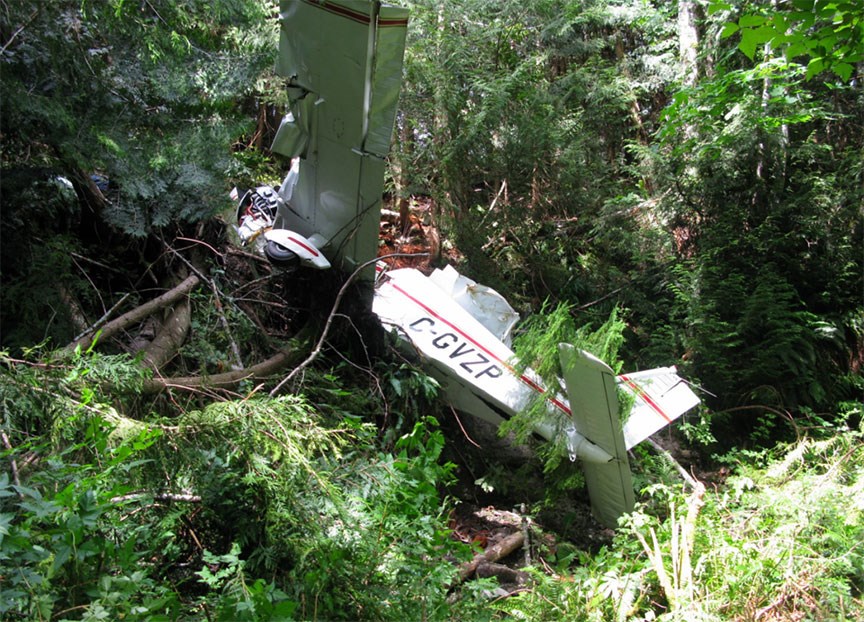The Transportation Safety Board (TSB) says a near full load and unexpected turbulence and downdrafts may have contributed to a fatal plane crash last summer in Sechelt.
The TSB report, released Jan. 9, said the pilot, who had more than 1,200 hours flying experience, was taking family members on sightseeing flights from the Sechelt Airport in his Piper Cherokee 140 on the afternoon of July 5, 2018.
The first 20-minute flight, with the pilot, another adult and two children on board, went without incident.
“The pilot took a short break between flights due to the high temperature in the aircraft cabin,” the report said. “Then, three other members of his family – one adult, one teenager, and one child – boarded the aircraft for a flight similar to the previous one.”
The flight took off about 2:44 p.m.
According to TSB investigators, “The aircraft maintained a nose-up attitude and slowly decelerated as it crossed the Chapman Creek ravine. It was airborne for less than 30 seconds before it collided with trees and crashed on the far side of the ravine.”
The pilot was killed, but the three passengers were able to walk away and seek help from residents of a nearby neighbourhood.
The report concludes that pilot fatigue was not a factor in the crash, but that the “aircraft’s performance decreased, resulting in its inability to climb above the terrain.”
TSB investigators cite GPS data that showed on the first flight the aircraft continued to accelerate after takeoff, but on the second flight “the highest speed the aircraft reached was at liftoff. After this point, the ground speed steadily decreased to 59 mph (95 km/h) – even though the aircraft was descending for about the last 15 seconds of the flight – and the aircraft collided with trees.”
The report concludes that there were several reasons for the plane’s decreased performance.
• The runway at Sechelt is uphill in the takeoff direction, and “uphill takeoffs decrease take-off performance.”
• The aircraft was at or near its maximum gross weight allowance.
• High air temperatures that day led to a higher “density altitude,” which can cause a decrease in aircraft performance.
• The aircraft may have encountered turbulence and downdrafts over Chapman Creek. The report notes that “turbulence and downdrafts over Chapman Creek are phenomena known to local pilots and had been reported by another pilot earlier in the day.”
This was a limited scope investigation and the TSB said the key safety message is that “pilots must remain vigilant to changes in the factors that can affect the performance of their aircraft.”
See the full TSB report here.



